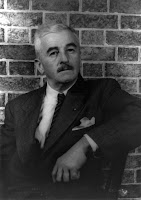Last month we saw 10 ways to improve the way we critique. Let's now take a look at the different ways we may respond.
Say you have submitted an article to your critique group, and you've received several responses. How do you react?
Here are eight possible scenarios:
1. "I love it when Jane critiques my work. She enjoys my writing so much she rarely corrects anything."
Jane is not critiquing your work. She's patting you on the back. This is of no value to you as a writer.
Don't you need encouragement? Certainly, but not to this degree, especially from a critique partner. Surely there should be some encouragement in the crit as well? Yes, there should. And hopefully she has given you some along the way. But telling you you're good will not improve your writing.
2. "I dread opening Jim's critiques. They usually resemble a blood bath."
Hmm. It could be that Jim is over heavy with his corrections. It could also be that he's the best critic you have. Don't be put off by the amount of corrections. Look for a bit of encouragement, but definitely look to see if his comments are justifiable. In which case, give thank for his dilligence, and tell him you appreciate his help.
3. "I find Mary's critiques difficult as I don't feel happy with the changes she insists I make."
You don't need to feel happy. You need to see if it improves your writing. If you don't like the changes she suggests, don't follow them. She is not telling you that you must make them. It's not Mary's article, it's yours. Ultimately the acceptance or rejection will be yours. Don't feel you have to follow every suggestion in your critiques. Absolutely not!
4. "I get indignant with Geoff's critiques. I often end up challenging him which leads to a healthy debate."
No, no, no! You should never enter into a debate when someone critiques you work. If you don't understand a comment, by all means ask for clarification so you can be sure what they mean. Then just say "Thank you for your time" and move on. If you agree, follow through. If you don't, disregard what doesn't resonate with you.
But do not argue. He will never critique your work again--rightly so! Even trying to explain what you meant to say is not the correct approach. You're not going to be next to your final readers to explain. So if he hasn't got it the first time, perhaps you do need to follow his suggestions.
5. "I get confused when four people tell me to change the same thing, but in different ways."
Of course you do. Take a good look at the comments and decide which suggestions you prefer. Which are closer to what you want to say? When I work through a critique, I do it paragraph by paragraph. I belong to a big critique group and often have 5 or 6 crits of the same article. I look at the first section and check all the comments, then edit accordingly before moving on. Just this last week, I received two suggestions for the same paragraph. I liked them both. Which to take? I copied both sets of comments to my working copy and continued with the article. By the time I reached the end, it was clear which of the two suggestions would work best for me.
6. "It doesn't seem like my article any more, now that I've worked on all the critiques."
This can happen. You've lost your voice. This you definitely don't want to do. Go back to the original and take a fresh look at it. (Never save over your first draft.) Check your critiques again and if necessary start over using less of the suggestions than before. Won't this take a lot of time? Yes. But do you want to be published or don't you?
7. "I often read critique points and choose to ignore the suggestions because I don't agree."
That's your prerogative. Take a good look at what they're saying though, before you decide to ignore them. But let me say it again—it is your article. You know what you want to say. You'll find this especially relevant if you've written in British English for an American market. American spelling, punctuation, grammar, and even words are often different. If only one says, "We would say XXX" and the others don't comment, you're probably safe to leave it alone. But if they all say, "Your comma should go here . . ." listen to them! Don't take the attitude of "I'm writing in British English." If you're writing for an American market, you shouldn't be! Learn from the Americans in your group.
You will always find suggestions you don't like, and that's fine. Analyse what they're saying. Be sure you understand their suggestions. Make sure your work says what you want it to. Then feel free to ignore them and move on. But above all . . .
8. "I accept the critiques with grace and appreciation, even though I may not use all the suggestions."
The person has taken time off that he or she could have used for their own writing, to help you. Do not argue with them. Do not point out they are wrong. Just accept their suggestions gracefully, and move on. If you don't understand what they mean, by all means ask for a clarification. But appreciate their suggestions, and use what is helpful. Then move on.





















